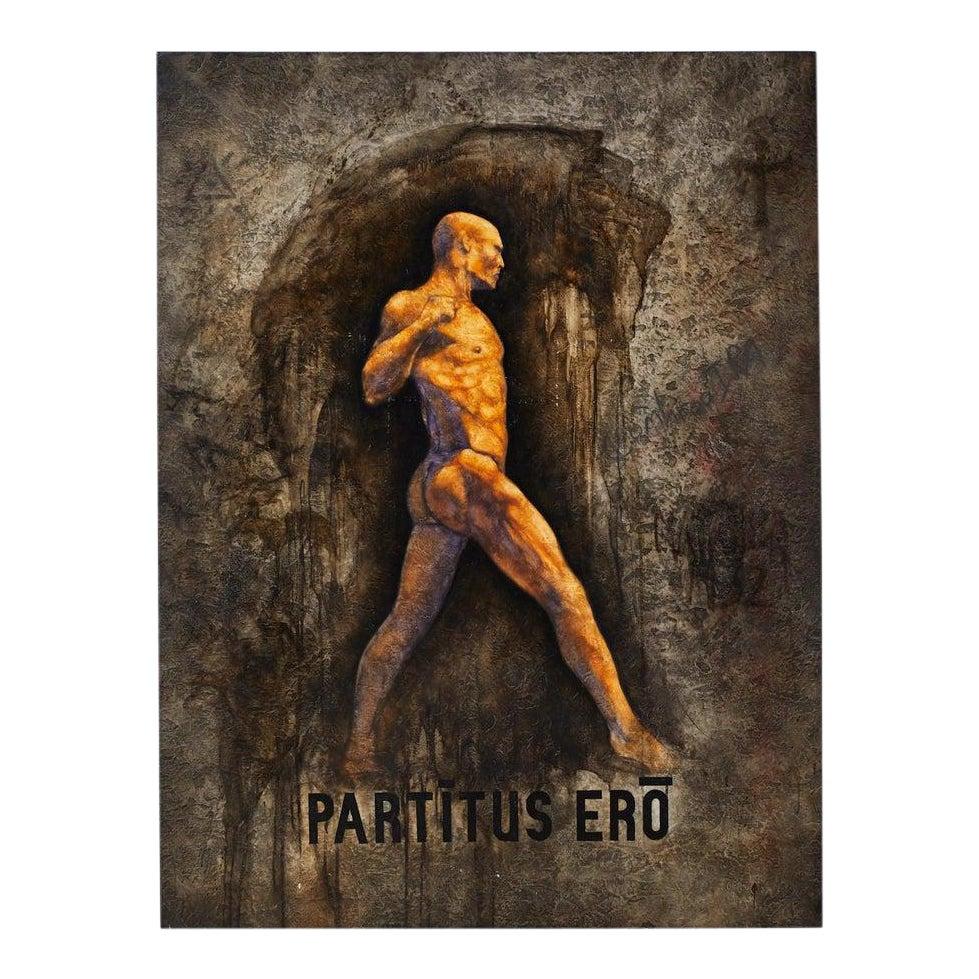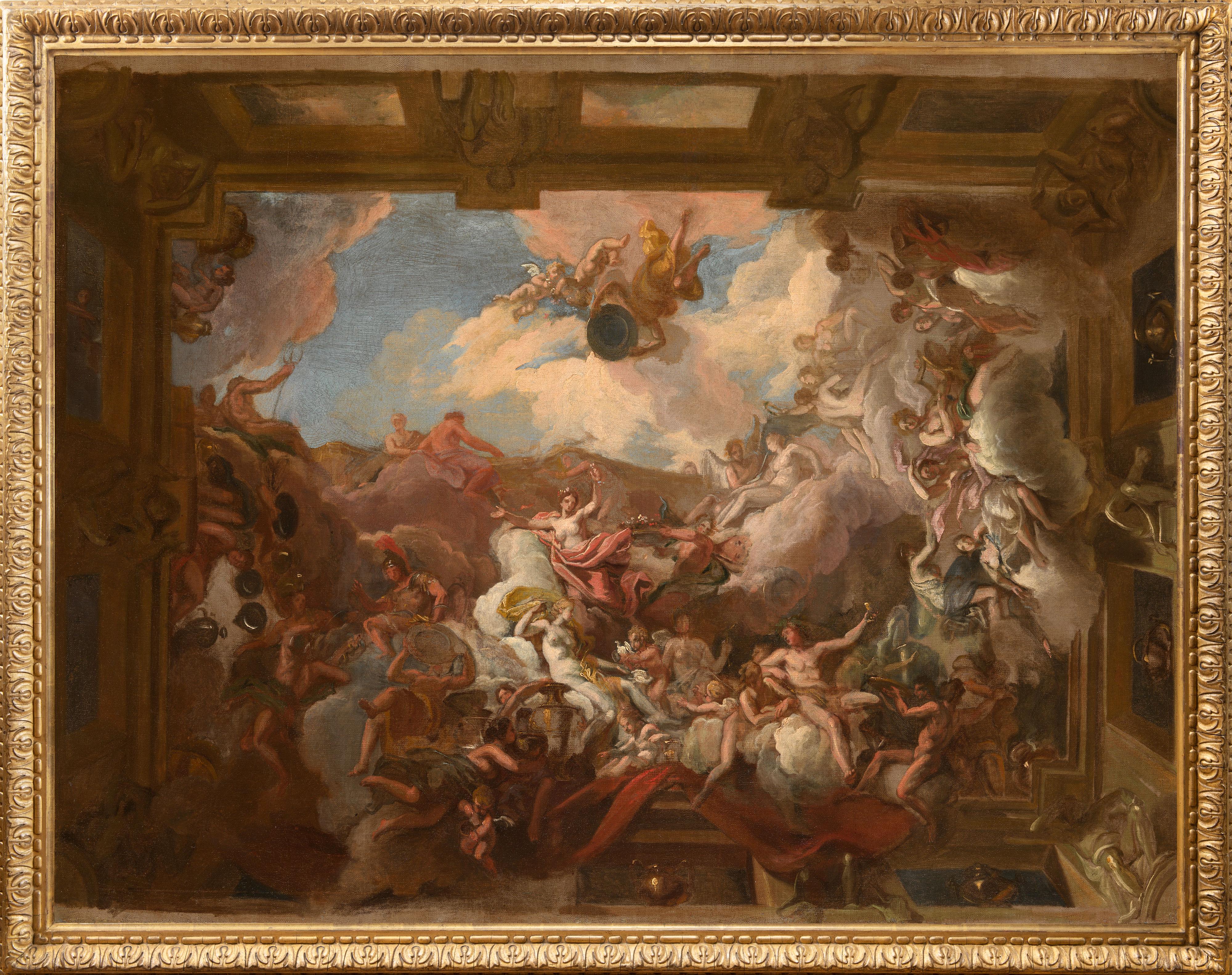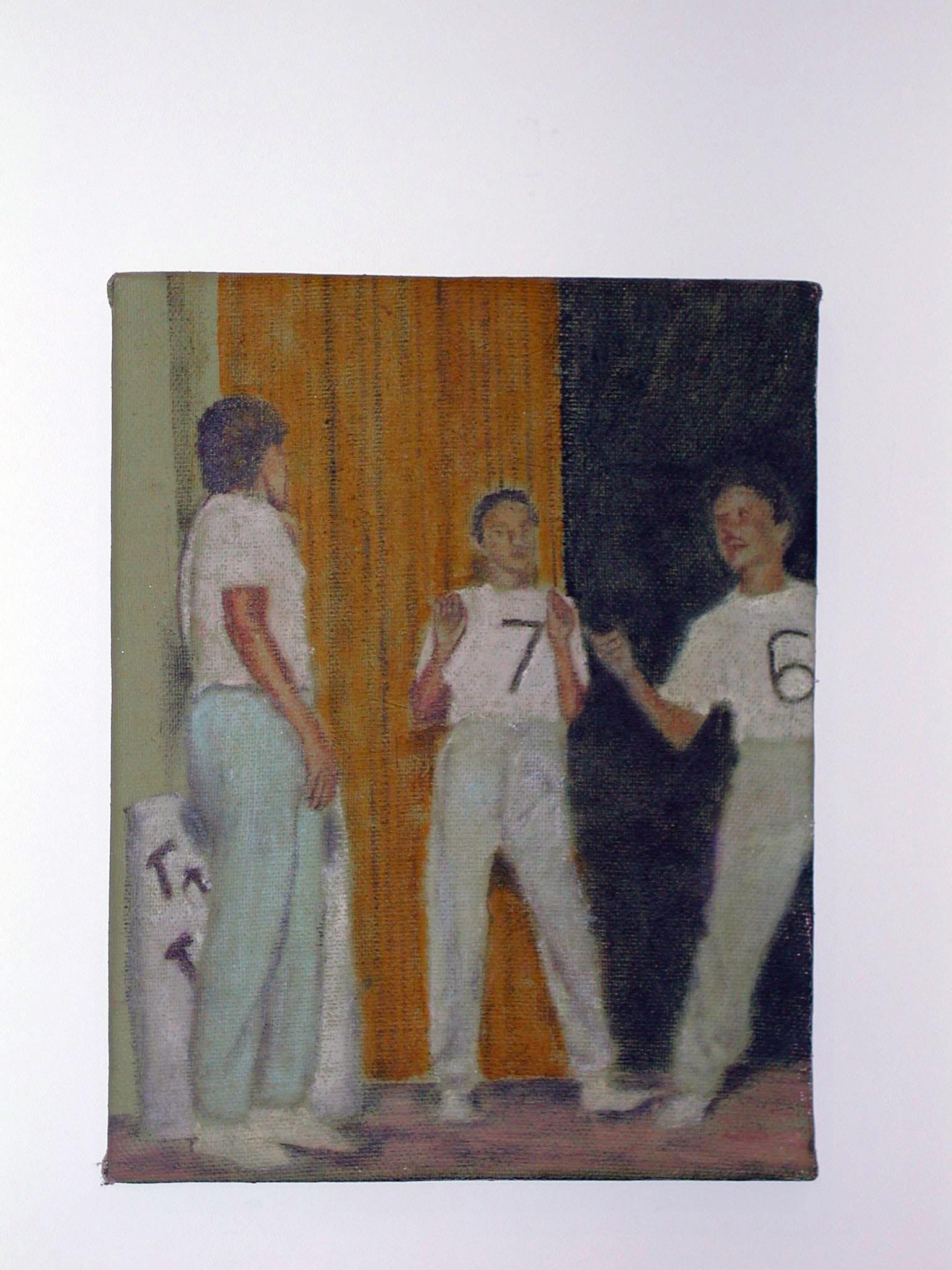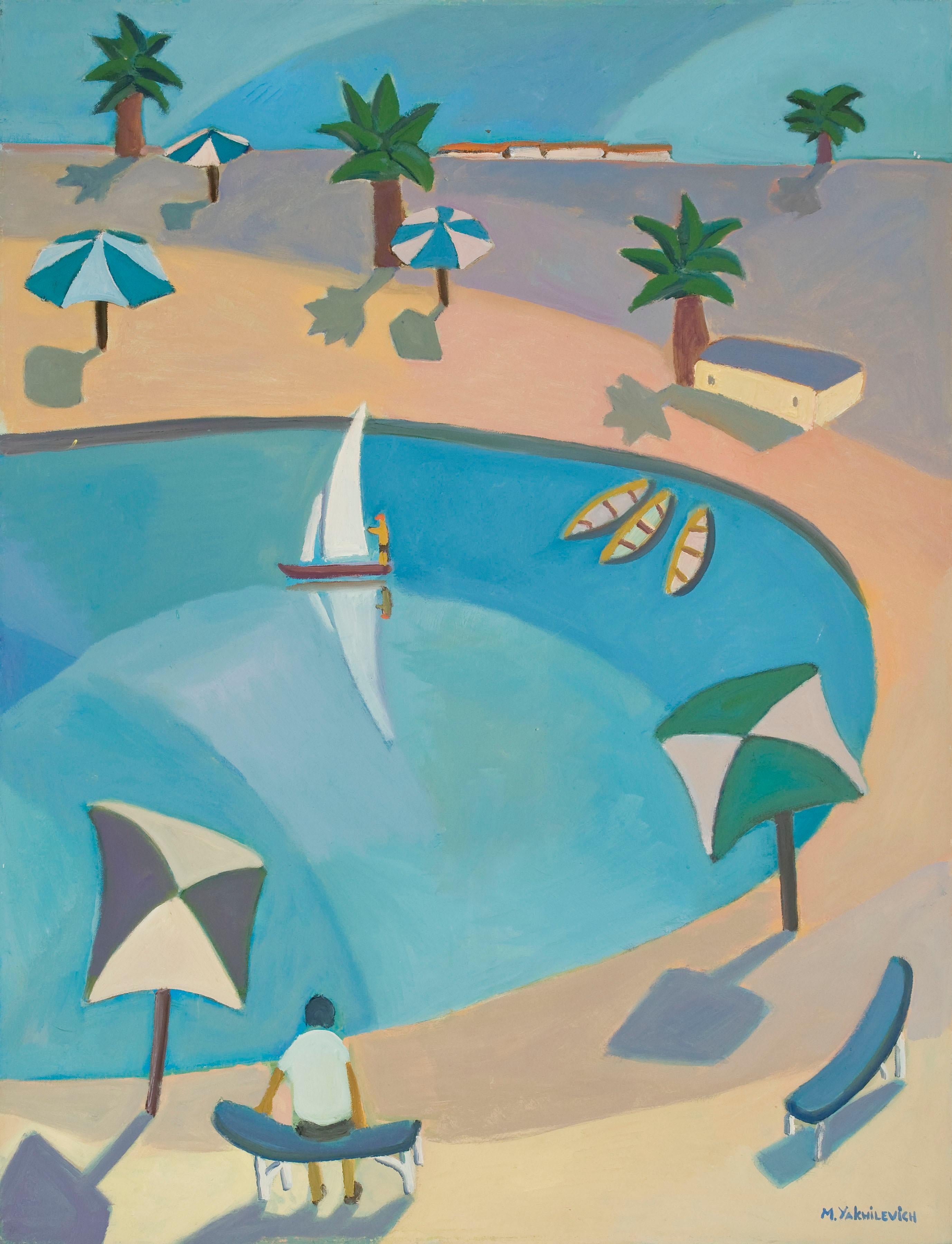Items Similar to Allegoria della Religione Dipinto olio su tela Felice Boscaratti (1721 - 1807)
Video Loading
Want more images or videos?
Request additional images or videos from the seller
1 of 21
Felice BoscaratiAllegoria della Religione Dipinto olio su tela Felice Boscaratti (1721 - 1807)XVIII secolo
XVIII secolo
About the Item
Felice Boscarati (Verona, 1721 – Venezia, 1807)
Allegoria della Religione
Olio su tela, cm 230 x 140
Scheda critica del Prof. Giuseppe Sava
Felice Boscarati (Verona, 1721 – Venezia, 1807), talvolta citato anche come Boscaratti o Boscarato, fu un pittore veneto allievo degli artisti Matteo Brida e Pietro Rotari, che lasciarono in lui un'impronta indelebile: la gamma dei colori della sua tavolozza, infatti, divenne essenziale, facendo uso in particolar modo di varie tonalità di grigi, marroni tenui, verde oliva, rosa e neri, e il bianco per le lumeggiature.
Dopo essersi trasferito a Roma per studiare l'antico compiendo un breve apprendistato presso Pompeo Batoni, divenne pittore e insegnante a Venezia e successivamente a Vicenza. Il soggiorno veneziano venne interrotto da una lunga permanenza a Verona, sua città nativa, dove il Boscarati lavorò alacremente e con accresciuta fortuna, inviando opere anche in Inghilterra e a Monaco di Baviera.
Tra le sue opere principali ricordiamo le tele con Il sogno di Elia e Il sacrificio di Melchisedech, collocate nel transetto della chiesa dei Santi Nazaro e Celso a Verona.
Le sue opere furono ampiamente riprodotte da incisori come Domenico Cunego e Cristoforo Dell’Acqua.
La seguente tela, di imponenti dimensioni, mostra un’elegantissima rappresentazione dell’Allegoria della Religione, soggetto reso precedentemente celebre dal pittore olandese Jan Vermeer (1632 – 1675). Seguendo la descrizione del letterato Cesare Ripa nell’Iconologia, la Fede cattolica viene descritta come una donna dai dolci tratti del volto, avvolta in un abito bianco (simbolo di purezza) e coperta da un piviale in broccato policromo (portato dai vescovi e dai papi nei pontificati), intenta a reggere con la mano sinistra le Tavole della Legge di Mosè con riportati i comandamenti in lingua ebraica, mentre con la destra la verga miracolosamente fiorita di Aronne, fratello di Mosè. Se le tavole e la verga alludono all’Antico Testamento e dunque alla radice giudaica del Cristianesimo, il libro ostentato dal tenero angioletto in basso rappresenta invece il Vangelo, ovvero il Nuovo Testamento. Tra gli altri attributi specifici troviamo la presenza di due suppellettili liturgi, un turibolo e un braciere ardente di manifattura barocca, simboli dell’illuminazione della mente portata dalla Fede, in grado di scacciare le tenebre e l’oscurità dell’infedeltà e dell’ignoranza.
Da un punto di vista formale, l’opera si contraddistingue per l’esecuzione di grande raffinatezza di ogni elemento, a partire dalla resa degli incarnati, quasi di porcellana, e dalla morbidezza dei panneggi delicatamente variopinti. L’immagine nel complesso evoca un profondo senso di dolcezza e devozione nei confronti dello spettatore, qualità che l’artista riesce a trasmettere attraverso l’espressività dei volti e la finezza della pennellata. Nonostante la cornice semantica impegnativa, fortemente imperniata sulla celebrazione della Fede e della Chiesa, il dipinto è lieve nella sua interpretazione formale, denotando un ritmo leggiadro e armonioso, vivificato da una tavolozza chiara e da una sostanza pittorica crepitante di luce, nella più alta tradizione veneta.
- Creator:Felice Boscarati (Italian)
- Creation Year:XVIII secolo
- Dimensions:Height: 90.56 in (230 cm)Width: 55.12 in (140 cm)
- More Editions & Sizes:cm 230 x 140 without framePrice: $25,138
- Medium:
- Period:
- Condition:
- Gallery Location:Milan, IT
- Reference Number:1stDibs: LU2639213027842
About the Seller
No Reviews Yet
Vetted Seller
These experienced sellers undergo a comprehensive evaluation by our team of in-house experts.
1stDibs seller since 2023
- ShippingRetrieving quote...Ships From: Milan, Italy
- Return PolicyA return for this item may be initiated within 14 days of delivery.
More From This SellerView All
- Jacob's departure for the land of Canaan Canvas from the Grechetto WorkshopLocated in Milan, ITWorkshop of Gio Benedetto Castiglione called the Grechetto (Genoa, March 23, 1609 - Mantua, May 5, 1664) Jacob's departure for the land of Canaan Oil on canvas, 80 x 115 cm - Fra...Category
17th Century Figurative Paintings
MaterialsOil, Canvas
- Battle scene Oil painting on canvas Attributed to Karel BreydelBy Karel BreydelLocated in Milan, ITAttr. to Karel Breydel, known as the Knight of Antwerp (1678 - 1733) Battle with knights and landscape in the background Oil on canvas, cm 44.5 X 36.7 Frame 52.5 x 45 cm The pain...Category
Late 18th Century Figurative Paintings
MaterialsCanvas, Paint, Oil
- Camp scenes Pair of paintings Angela Maria Pittetti known as PalancaLocated in Milan, ITAngela Maria Pittetti known as Palanca (Palancato, 1690 - Turin, 1763) Hunting rest Camp scene (2) Oil on canvas, 85 x 66 cm - with frame 90 x 71 x 4 cm A work of Piedmontese sco...Category
18th Century Figurative Paintings
MaterialsOil, Canvas, Paint
- Immaculate Madonna within garland painting Giovanni Stanchi and Girolamo PesciBy Giovanni StanchiLocated in Milan, ITGiovanni Stanchi (Rome, 1608 - 1675) and Girolamo Pesci ( Rome 1679 - 1759) Immaculate Madonna within floral garland Oil on canvas, cm 95 x 72 Frame, cm 106 x 83 Expert opinion o...Category
17th Century Figurative Paintings
MaterialsCanvas, Paint, Oil
- Assunzione della Vergine Dipinto di Giovanni Coli e Filippo GherardiLocated in Milan, ITGiovanni Coli (San Quirico, 1636 - Lucca, 1681), Filippo Gherardi (Lucca, 1643- 1704) Assunzione della Vergine Olio su tela, cm 95 x 70 Con cornice cm 111 x 85 La tela in esame è...Category
17th Century Figurative Paintings
MaterialsCanvas, Paint, Oil
- Game of bowls Oil painting on canvas by Domenico OliveroLocated in Milan, ITDomenico Olivero (Turin, August 1, 1679 - January 13, 1755) Game of bowls Oil on canvas, 43 x 65 cm With frame, 54.5 x 76 Expert opinion Prof. Alberto Crispo The painting shown here depicts peasants playing bowls near a farmhouse, while one of them offers sweets to a little girl. The canvas, in my opinion, can be traced back to the hand of Pietro Domenico Olivero (Turin, August 1, 1679 - January 13, 1755), as revealed by comparisons with other works by the artist, such as the Peasants' Feast already at the Gilberto Zabert Gallery in Turin, where we find an entirely similar layout, with the figures crowded around the building, placed on the left, and some household goods piled up on the right, including a copper cauldron almost identical to the one sketched in our painting. But see also other similar subjects painted by the Turin-based artist, such as the Game of Bowls already at the Cantore Gallery in Modena or the other version on the Genoese market in 2019, which, although radically different compositionally, confirm the painter's interest in playful themes and manifest the same ways in delineating characters, with synthetic and robust brushstrokes. The artist was born in Turin, in the parish of St. Thomas, on August 1, 1679 to Giovanna and Francesco, a carver by profession. He trained at the workshop of the painter and architect Melchiorre Baldassarre Bianco. He was esteemed by Victor Amadeus II of Savoy, who commissioned paintings for the Venaria Reale (1714), the Royal Palace of Turin (1716), and Rivoli Castle (1724), as well as by his ministers Pietro Mellarède and Carlo Vincenzo Ferrero di Roasio marquis of Ormea whose collections counted many of the painter's works. His success on the Turin art scene earned him election as prior of the Accademia di San Luca in Turin (1726). In 1731 he painted the eleven canvases with Stories of Franciscan Saints in the sacristy of the church of St. Thomas in Turin, while in 1734 he made the Marriage at Cana for the sanctuary of Oropa. The Savoy commissions continued with the ten canvases executed for the castle of Agliè (1737), the decoration of the third room of the New Archives in the Royal Palace of Turin (1739-41), and the thirty or so works for the hunting lodge at Stupinigi (1748-51). The painter also measured himself in designing sets for the Teatro Regio in Turin (1745-46). He made his will on November 15, 1754, and died in his hometown on January 13, 1755. Olivero's genre scenes, such as the one commented on here, reveal a focus on Flemish painting, particularly by David Teniers the Younger, Peter Mauritz Bolckman, Theodor Helmbreker, and Cornelis de Wael, as well as Roman bamboozlers such as Pieter van Laer, Michelangelo Cerquozzi, and Jan Miel...Category
18th Century Figurative Paintings
MaterialsCanvas, Paint, Oil
You May Also Like
- Separation of Creation Oil PaintingBy John U. AbrahamsonLocated in Rio Vista, CADramatic oil on canvas surrealist painting by John Abrahamson (American 20th Century) depicting a nude male with the motto Partitus Ero or I wager in Latin. Abrahamson is known for h...Category
20th Century Surrealist Figurative Paintings
MaterialsOil, Canvas
- 20th century oil painting entitled The Unknown CornerLocated in London, GBCollections: Robert Isaacson; James Draper, New York, 2014. Exhibited: Cambridge, The Fitzwilliam Museum, Beggarstaffs: William Nicholson and James Pr...Category
Early 20th Century Modern Figurative Paintings
MaterialsCanvas, Oil
- 18th century oil sketches for a Baroque interior - a pairLocated in London, GBA FEAST OF THE GODS WITH VENUS AND BACCHUS Collections: With Appleby Brothers, London, June 1957; Hazlitt, Gooden & Fox, London, 1961; John and Eileen Harris, acquired from the above, to 2015. Literature: Jacob Simon and Ellis Hillman, English Baroque Sketches: The Painted Interior in the Age of Thornhill, 1974, cat. no.12 (as by Louis Laguerre); Elizabeth Einberg (ed.), Manners and Morals: Hogarth and British Painting, 1700-1760, exh. cat., London (Tate Gallery), 1987, cat. no.10 (as by Louis Laguerre); Tabitha Barber and Tim Bachelor, British Baroque: Power and Illusion, exh. cat., London (Tate Britain), 2020. Exhibited: Twickenham, Marble Hill House, English Baroque Sketches: The Painted Interior in the Age of Thornhill, 1974, no.12 (as by Louis Laguerre); London, Tate Gallery, Manners and Morals: Hogarth and British Painting, 1700-1760, 1987, no.10 (as by Louis Laguerre); London, Tate Britain, British Baroque: Power and Illusion, cat. no 92, 2020. CUPID AND PSYCHE BEFORE JUPITER Collections: With Appleby Brothers, London, June 1957; Hazlitt, Gooden & Fox, London, 1961; Anthony Hobson, acquired from the above, to 2015. These recently re-united paintings are the most ambitious surviving baroque ceiling sketches made in Britain in the early eighteenth century. From the Restoration until the rise of Palladianism in the 1720s decorative history painting formed the preeminent artistic discipline in Britain. It was a field dominated by Continental artists including the Italian Antonio Verrio and the Frenchmen Louis Laguerre and Louis Chéron...Category
Early 18th Century Baroque Figurative Paintings
MaterialsCanvas, Oil
- Untitled (Jai Lai)Located in Beverly Hills, CAProvenance: Ibid Projects Private collection, Los AngelesCategory
Early 2000s Contemporary Figurative Paintings
MaterialsCanvas, Oil
- Mikhail Yakhilevich, Boating, 116x89 cm, oil on canvas, minimalist paintingLocated in Jerusalem, ILMikhail Yakhilevich (Israeli, Russian) Boating 116x89 cm oil on canvas Michael Yakhilevitz was born in 1956 in Moscow. He graduated from The Stage Design Department of The Moscow Ar...Category
1990s Landscape Paintings
MaterialsCanvas, Oil
- Contemporary Oil of Antique, Rustic Porcelain Christian/Catholic Virgin MaryLocated in Fort Worth, TXMother Mary, 2017 John Hartley discovered his life's passion while growing up in Piqua, Ohio. Encouraged to develop his talents in an academic environme...Category
2010s American Realist Still-life Paintings
MaterialsOil, Canvas, Acrylic





